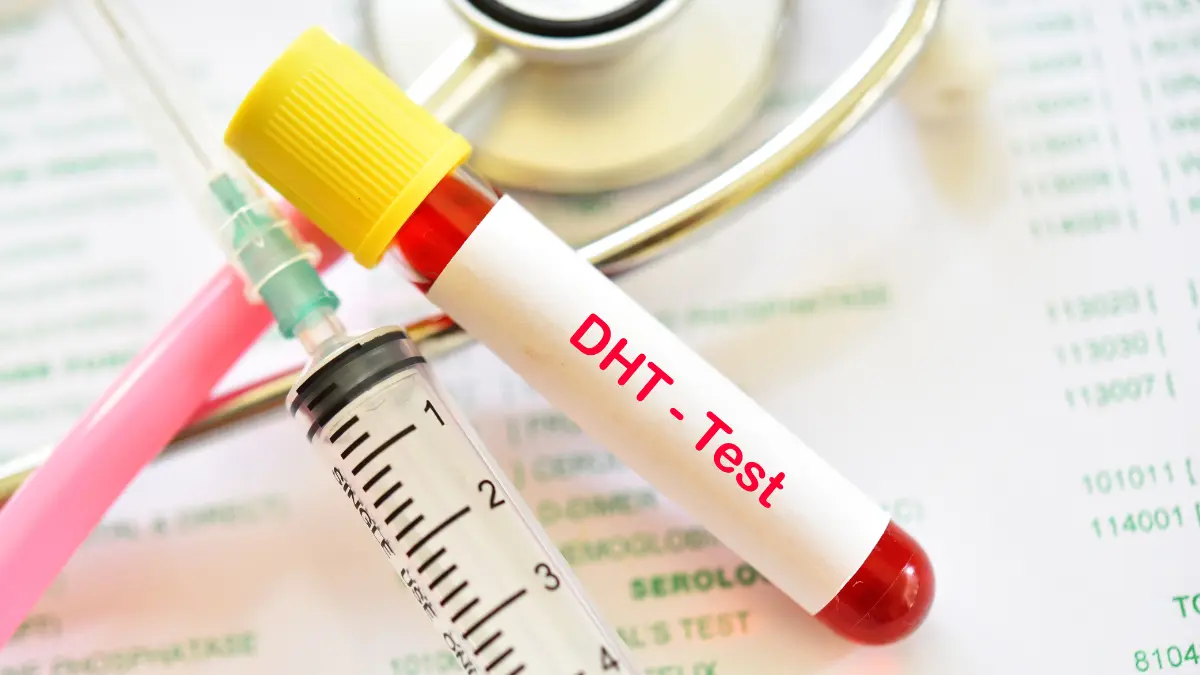Understanding DHT Test: A Key Diagnostic Tool for Hormonal Balance
The DHT test, also known as the Dihydrotestosterone test, is a crucial diagnostic tool.
It provides valuable insights into hormonal balance and its impact on various physiological processes.
DHT, a potent androgen hormone derived from Testosterone, plays a significant role in developing and maintaining male sexual characteristics.
It is essential for the growth of the prostate gland, the development of secondary sexual characteristics, and the regulation of libido.
However, imbalances in DHT levels can lead to health issues such as Male Pattern Baldness and prostate enlargement.
This article will explore the significance of DHT testing and its implications in understanding and addressing related health concerns.
What is the DHT test
A DHT test measures Dihydrotestosterone (DHT) in the body, also called a DHT test.
DHT, “Dihydrotestosterone,” is a hormone in the group called “androgens.”
It comes from Testosterone when the enzyme 5-alpha-reductase does its job.
It involves taking a blood sample, which is then tested in a lab to determine how much DHT is in the blood.
This test is often used to diagnose and monitor diseases like male pattern baldness (Androgenetic Alopecia) and Benign Prostatic Hyperplasia (prostate enlargement).
The National Center for Biotechnology Information conducted a study to evaluate the usefulness of DHT levels in patients with Androgenetic Alopecia.
It was concluded that DHT is an influential hormone in the body.
Moreover, it plays an essential role in the pathogenesis of Androgenetic Alopecia.
The results of the DHT test can help decide how to treat someone and keep track of the working of treatments.
It is in charge of the prostate gland’s growth and development and the growth of secondary sexual traits like face and body hair.
The results of the DHT test, along with other factors like family history and a clinical exam, can help guide treatment choices and help develop personalized plans to deal with hair loss.
A DHT test for hair loss is a diagnostic process that measures the levels of DHT in the body.
It focuses on DHT’s role in Androgenetic Alopecia, also known as Male Pattern Baldness.
This test helps determine if high amounts of DHT are causing hair loss.
By measuring DHT levels, doctors can determine the balance of hormones and what might be causing hair loss.
Checking DHT at home
Over-the-counter test kits can’t be used to check the amount of DHT at home.
Usually, a healthcare worker must take a blood sample and send it to a lab for analysis to measure DHT levels.
This makes sure that the results are correct and effective.
Some hormone testing kits can be used at home but may not test for DHT or be as accurate as lab testing.
It is best to talk to a healthcare worker who can advise the proper tests and help you determine how to measure DHT levels correctly.
Implication & treatment options

Once the level of DHT is known, doctors can develop treatment options that are right for the individual condition being treated.
Male Pattern Baldness can be treated in several ways, such as with drugs that stop Testosterone from turning into DHT or make hair grow.
For people with BPH, knowing their DHT levels can help doctors decide how to treat them.
Medication that stops Testosterone from turning into DHT or blocks DHT receptors may be given to treat symptoms and slow the growth of a big prostate.
Conclusion
The DHT test is a way to diagnose and treat conditions like Male Pattern Baldness and enlarged prostate related to how androgens work.
By measuring DHT levels, doctors can learn about the balance of hormones and develop specific treatment plans.
But it’s important to talk to a doctor or nurse about adequately reading and understanding DHT test results and what they mean.
The DHT test helps improve general health and well-being by being carefully evaluated and managed correctly.
Frequently Asked Questions
What is a DHT test?
A Dihydrotestosterone (DHT) test is a medical test that measures the amount of DHT in the body. It is done to assess and evaluate conditions linked to regulating androgens, such as male pattern baldness and an enlarged prostate, and to determine how well treatments for these problems work.
How do you know if your DHT is too high?
If you have too much DHT, you might get male pattern baldness, acne, oily skin, more body and facial hair growth, and maybe even an enlarged prostate gland. But it’s important to talk to a doctor or nurse to get a correct diagnosis and explanation of DHT levels.
Do I need a DHT test?
Whether or not you need a DHT test depends on your symptoms and personal situation. If you are having problems with how your body regulates androgens, such as male pattern baldness or an enlarged prostate, you should talk to a doctor.
How much does DHT test cost?
The price of a DHT test can change based on several things, such as the health care provider, the location, and whether or not you have insurance. A DHT test can cost anywhere from $50 to $200. It’s best to check with your healthcare provider or lab for detailed pricing information.
How do I know if my hair is affected by DHT?
If DHT affects your hair, you may see signs like thinner hair, a receding hairline (especially at the temples), and hair loss, mainly on the top of the head. A dermatologist or hair expert can help you determine what’s wrong and how to treat it.
WowRx uses only high-quality sources while writing our articles. Please read our content information policy to know more about how we keep our content reliable and trustworthy.






